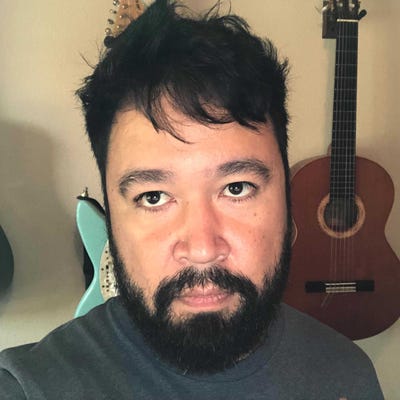In the latest Road to the IGF interview with 2010 IGF finalists, Gamasutra speaks with Jamie Cheng, executive producer of the attractive 2D brawler Shank, nominated for Excellence in Visual Art.

[In the latest Road to the IGF interview with 2010 IGF finalists, Gamasutra speaks with Jamie Cheng, executive producer of the attractive 2D brawler Shank, nominated for Excellence in Visual Art.] A staple of the arcade scene in its heyday, the 2D side-scrolling beat-'em-up genre let quarter pumpers take control of a character who would use a combination of weapons and knuckles to accomplish a singular ultimate goal: to keep advancing to the right, by any means necessary. Klei Entertainment's Independent Games Festival finalist Shank looks to recapture the essence of the 2D brawler genre--the action, the intensity, and the violence--albeit with plenty of modern day visual polish, which was enough to earn the game a 2010 IGF nomination for Excellence in Visual Art. Jamie Cheng, CEO of Klei and executive producer on Shank, gives more background on the development of Shank, life after releasing the digital release Eets, and why the studio decided to explore the classic 2D brawler genre. What kind of background do you and your team have making games? We've got a pretty wide range of experience, but you could say we're decently seasoned. We have team members who previously worked at Relic, EA, Blue Castle, and a bunch of other studios. Most recently Andrew Chambers came on as a senior designer, and he's had a myriad of experience, including one of my personal favorites Freedom Force. What development tools did you use for Shank? We spent the better part of the year building a brand new pipeline for Shank. We built in-house Level and FX tools designed for our 2D look, a custom Flash pipeline for the artists to animate in, and a new game engine that the designers use to control behaviors. I can't say enough about our programming team -- Alex, Chris, Ju-Lian and Kevin -- they really worked some magic to free the artists and designers and create something really special. How long has your team been working on the game? Shank started in January 2009 -- pretty much the day after our previous publisher closed its doors. In retrospect, it was a huge blessing to be able to spend most of the year working with our team on something that is entirely in our control. How did you come up with the concept for the game? Why a 2D brawler? Shank is an idea Jeff [Jeffrey Agala, creative director] and I came up with while working on our previous game, Sugar Rush. We felt that the genre wasn't fully explored, and had a ton of potential, so we decided to push some of those boundaries and give players something they weren't expecting. Pushing the visuals to be cinematic without sacrificing gameplay is something we feel really strongly about, and so far the feedback has been very encouraging. Were there any specific 2D brawlers that heavily influenced the game, or was it just the genre in general? It's interesting how often I get asked this question! We definitely take some our roots in the spirit of Double Dragon, where it was one of the first times players were able to choose what sorts of attacks they wanted to inflict and it had real meaning to them. But in our discussions I find our references are all over the map -- from Prince of Persia to Uncharted to Street Fighter to... pretty much anything. The animation gives the feeling of weightiness and power. What's the secret to achieving that? It's satisfying to play and even watch. Thank you! The majority of the animation you see is created by Aaron Bouthillier. He, like our other artists, are trained 2D animators, and that's obviously something that really shows. We also spent countless hours poring through gameplay mechanics and animation to give it that weight. I definitely think it's the product of all parties -- the engine, the animation, and the design tweaking that all came together. The art direction is pretty stunning. Is this the look that you had in mind from the start? This is definitely the direction that Jeff was going for since the early days. What we were able to achieve evolved over time as our tools continued to improve, but since February, when Meghan Shaw painted the first mockup of our level, we pretty much had our look down. What lessons learned from the development of Eets did Klei apply towards Shank? I could probably write a book on that! I think my favorite lesson is that it's a great feeling to make a game authentically -- when we built Eets, we knew what we were building and we simply had fun building it. I don't think we've ever had as much fun creating games as we have been creating Shank. Have you played any of the other IGF finalists? Any games you particularly enjoyed? I'm a bit sheepish to say that I haven't played most of them, but I did check out Rocketbirds Revolution! and it's certainly impressive what they managed to do in Flash. Really early on, I had whipped up a brief Shank test in Flash and I got stuck quickly on performance issues, so I was pleasantly surprised with the tricks they used to bring it to the next level. What do you think of the current state of the indie scene? I was reading back on this same question in 2007, 2008 and 2009, and every year the answer is the same: it's better than before. I think as an industry we're in need of promoting the talent behind the games more than ever, and the indie movement is key for that to happen. Of course, it helps that amazingly quality games are being made by increasingly smaller resources. All the work that other independents are creating definitely pushes us to reach higher, and the people in the industry simply couldn't be any more supportive. Can the 2D brawler become more than a niche in today's market? I suppose that depends on how you define niche and market. Semantics aside, I think the genre has a lot more to give than it has so far and we'll see more and more hybrids of the 2D brawler coming out that will be very successful. I'm looking forward to playing them! [Previous 'Road To The IGF' interview subjects have included Enviro-Bear 2000 developer Justin Smith, Rocketbirds: Revolution's co-creators Sian Yue Tan and Teck Lee Tan, Vessel co-creator John Krajewski, Trauma creator Krystian Majewski, Super Meat Boy co-creators Edmund McMillen and Tommy Refenes, Sidhe's Mario Wynands, who worked on Shatter, and Daniel Benmergui, creator of Today I Die]
About the Author(s)
You May Also Like









